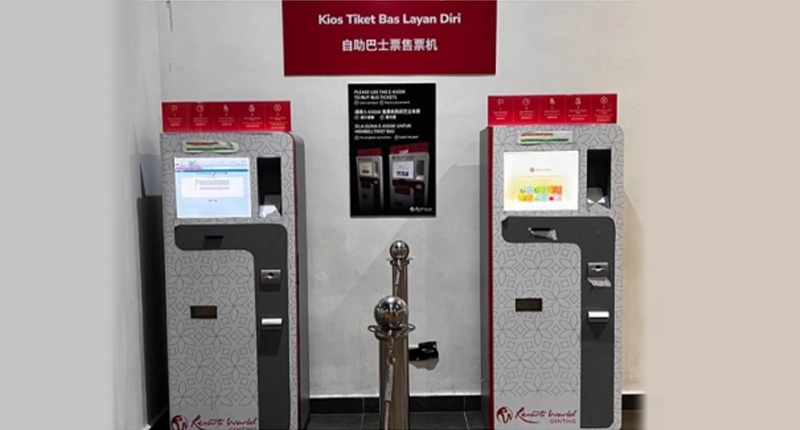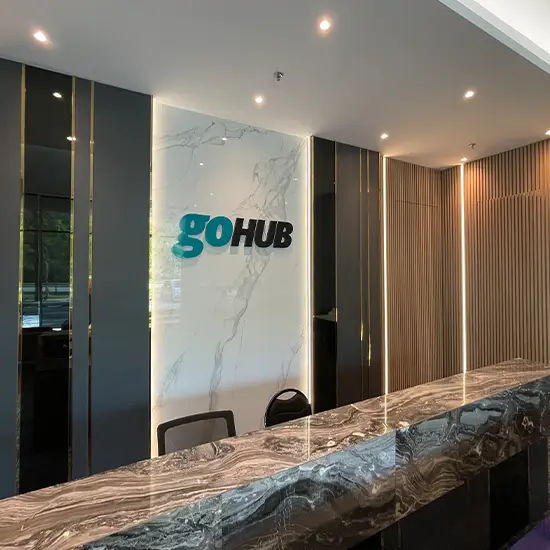Transportation IT Solutions
Terminal Operating System (TOS)
Our Solutions
Our Terminal Operation System (TOS) serves as a central system for efficient management and oversight of terminal operations, contributing to operational efficiency, cost savings, and an enhanced experience for both operators and passengers.
It plays a vital role in optimizing various aspects of terminal management and ensuring the smooth operation.
TOS comprises of two solutions as below

Traffic Management System (TMS)
Developed to optimise and streamlise the traffic processes of bus terminals to improve operational efficiency.

Centralized Ticketing System (CTS)
Developed to complement TMS as a real-time centralised ticketing system connecting passengers and operators across multiple channels, including ticketing counters , TVMs, ticketing web platforms and mobile applications.
Centralized Ticketing System (CTS)
CTS is a centralised ticketing system, serving as a unified and integrated platform that manages the issuance, distribution and processing of tickets across multiple channels, including ticketing web platforms, mobile applications, ticketing counters and self-service TVMs. It also consolidates ticket-related operations into a single system, which streamlines and simplifies the processes of ticket sales, issuance and management. The pictures above show some examples of ticket sales via ticketing counters and self-service TVMs available at the terminals.
We have customised and developed CTS for our bus and rail segments:
Ticketing Interface
An intuitive user interface where allows to select their desired destinations, travel dates and seating preferences. The interface is accessible via various channels, such as the ticketing counters and self-service TVMs at bus terminals, ticketing web platform and mobile applications.
Booking Management
Payment Gateway
Data Analysis and Reporting
API Integration





Cashless ticket purchasing
Real-time information management
Customer profile management
Data analysis and reporting
Security and fraud detection
Integration with other systems






Traffic Management System (TMS)
TMS is generally applied to terminal based operations as the system infrastructure optimises the utilisation of platform bays, and management and control of the arrival and departure gates. TMS operates from a command centre in terminals, serving as a centralised hub for managing the arrival and departure of buses, passengers’ traffic, safety and security, and other key aspects of terminal operations. With TMS, the administrator can oversee the entire terminal operations from a single location via IP cameras that are placed throughout the terminal.
HERE is how TMS contributes to these benefits:

Dynamic Bay Allocation
This feature allocates limited bus bays based on a first-come-first-served basis and is subject to bus operators having APAD licences. It prevents bus bay hogging and helps to reduce idle time and congestion at the terminal with the aim to achieve smoother operations.

Real-Time Information Management
TMS provides real-time information about bus schedules, destinations, delays and bay allocations. This information is communicated to bus operators, terminal staff and passengers through digital signage, mobile applications and online website.

Traffic Management
TMS monitors and controls the movement of buses within the terminal using RFID and IP cameras to identify buses and manages bus arrivals and departures automatically. It helps in managing traffic flow, minimising bottlenecks and preventing accidents.

Passenger Information System
TMS provides passengers with timely information with regard to bus schedules, bay locations and delays, amongst others and communicated through mobile applications and/or digital signage at the terminal.

Integration With Other Systems
TMS is integrated with other systems such as CTS, customer service platforms as well as surveillance systems to manage terminal operations comprehensively.

Data Analysis and Reporting
TMS collects and analyses data on various aspects of terminal operations, such as bus services, passenger traffic and bay utilisation which can be used to generate reports, make informed decisions and improve services.


